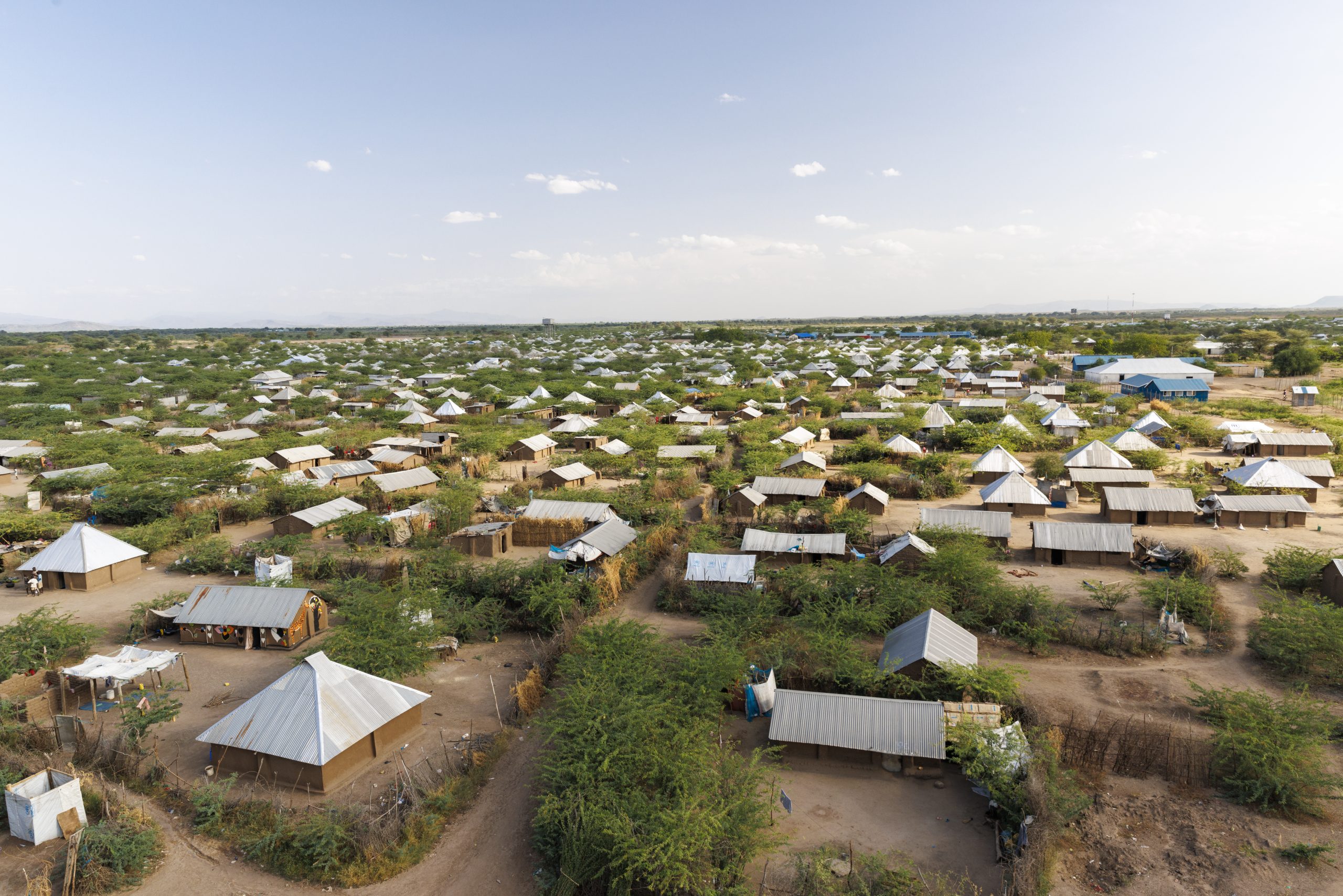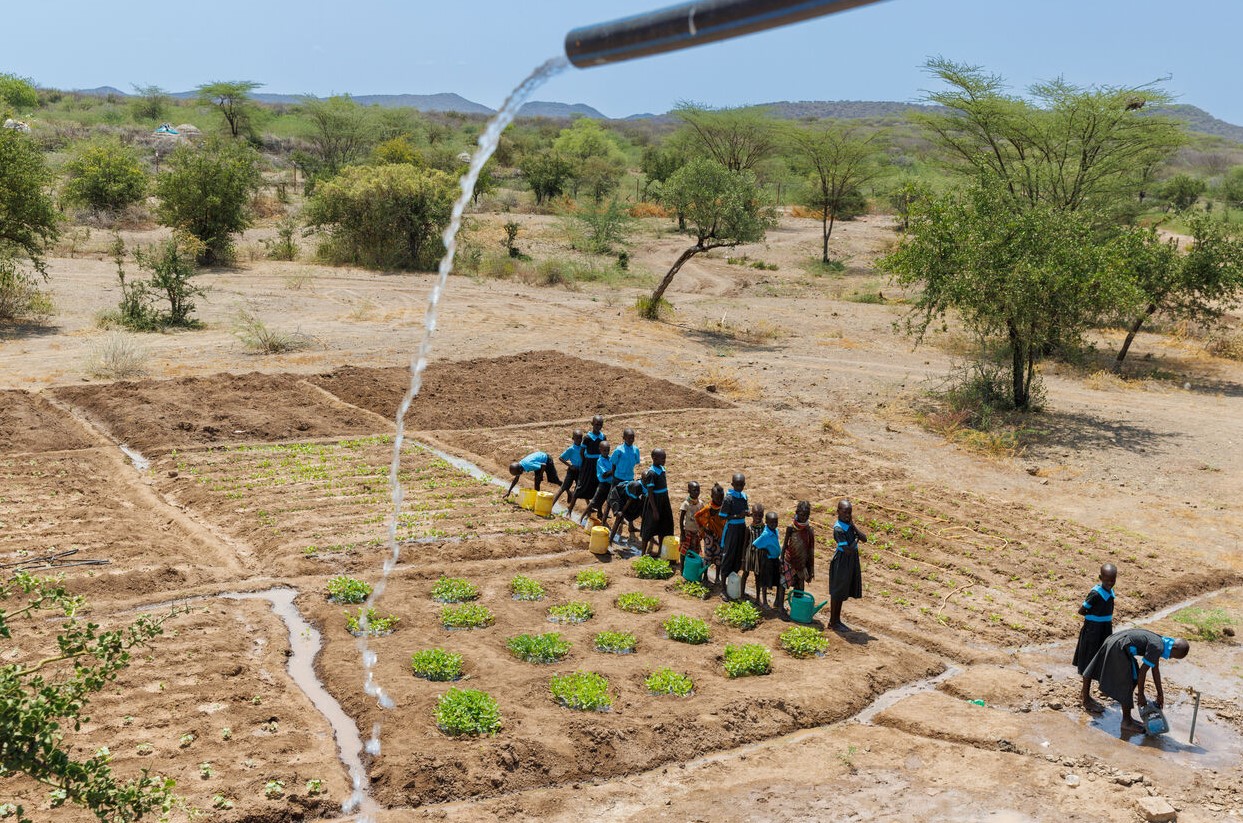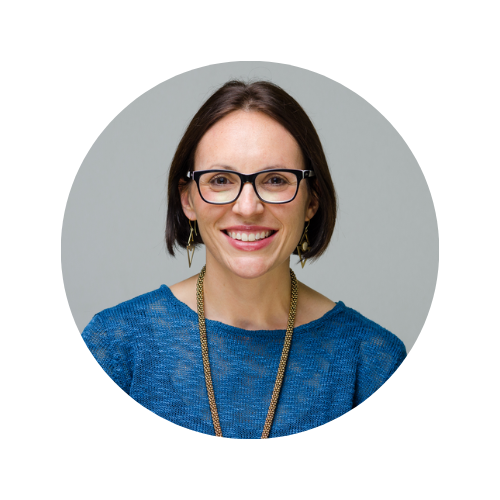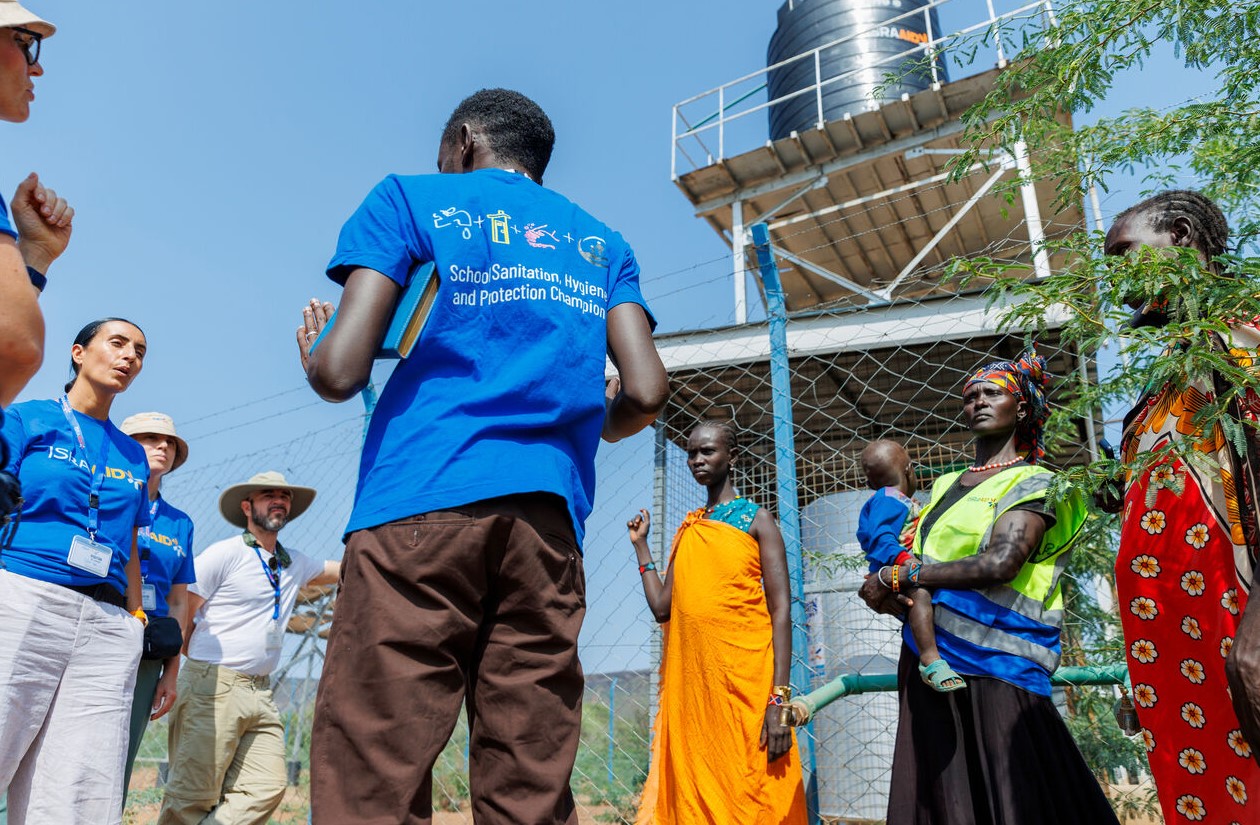There’s a delicate relationship between attention, crisis, and action. As a humanitarian, I see this relationship play out every day. Global attention translates to donor attention, aid budgets, and ultimately improved conditions for some of the world’s most vulnerable people.
But attention is a fickle, finite resource. Once a crisis becomes too intractable – once it has continued for many years and seems too complicated to solve – we no longer hear about it. Even if the needs are only growing.
However, these seemingly intractable crises are often made up of problems that aren’t complicated at all. They’re painfully, insultingly solvable. While we’re fatigued by the terrifying big picture, we miss what can be done.

Kakuma refugee camp in Kenya. Source: Lameck Ododo/IsraAID.
I’ve just returned from Kakuma refugee camp in northern Turkana, Kenya, where our amazing IsraAID team has worked since 2015.
Kakuma, which means “nowhere” in Swahili, is home to more than 330,000 refugees and hundreds of thousands of local Turkana people. But Kakuma isn’t “nowhere.” It is a community of extraordinary, resilient people, working to survive under conditions that the world has quietly chosen to ignore. And just because the world is no longer watching, doesn’t mean the situation stops evolving. The humanitarian conditions are deteriorating at an alarming rate, and the situation has never been so desperate. And right now, the basics are failing.
For example, water access remains dire. Turkana has not recovered from its worst drought in decades, which affected the entire Horn of Africa from 2021 – 2023. Children dig in dry riverbeds for hours, missing school, only to return with contaminated water that causes a myriad of waterborne illnesses. According to our latest internal figures, on average, less than 35% of daily water needs are met. The consequences ripple through everything: Health, education, sanitation, safety, and livelihoods.
Food insecurity is at a breaking point. With recent aid cuts, and slashes to global funding, leading to the lowest levels of nutrition support ever recorded in Kakuma. Only the most vulnerable, including primarily single mothers with many children and child-led households, receive 20-40% of the UN recommended monthly amounts. The rest get nothing. The global acute malnutrition rate among children under 5 and pregnant and lactating women has reached 13% in this region.
It’s true that these issues are complex and composed of a web of factors: From the climate crisis, to aid cuts, political economy dynamics, regional conflict, global instability, and migration. There is no wholesale solution on the horizon. Yet the most frustrating part is that we do know how to fix at least some of it.
In Kakuma, IsraAID has drilled three boreholes in recent months. Building on decades of experience in water technology, we were able to locate high-yield locations where groundwater could be accessed. One of these boreholes, in Nakwangat, has the highest yield of any in the refugee camp. With solar power, pumps, and piping, it could produce 230,000 liters of clean, safe water every single day. This one borehole could raise safe water access in Kakuma from 35% to 47%, reaching an additional 10,600 people. It would be a sustainable solution, managed locally, that could last for generations, as our past projects show. The cost? $180,000.
Yet due to funding gaps, the borehole sits idle and capped.
$180,000 is not a small sum for an individual, but in the scale of humanitarian funding, it should be eminently achievable.
Our water specialist put it simply: “I lose sleep every night thinking about the 230,000 liters of water we could supply every day, if only we had the funds.”
This is the quiet scandal of protracted humanitarian emergencies. Solvable problems go unsolved.

Kakuma refugee camp in Kenya. Source: Lameck Ododo/IsraAID.
When one really considers the magnitude of crises facing us – from climate change to global conflict and refugee crises – it’s understandable to feel overwhelmed. Compounding that are additional issues in our sector that we are still learning to navigate sensitively everyday (and will change entirely depending on where you are working) including global power imbalances, issues concerning foreign aid dependency, and complex historical, political or cultural dynamics within the communities we work.
Yet, the gaps between desperation and dignity can be actively reduced through relatively small investments. And while we may not be able to solve every problem, if we pay attention, we can still make a huge difference. Even further, we can ensure that every project is made sustainable and built for the long-term.
The call to action is clear: We need to focus our attention on what we can do. We must continue reminding ourselves, our donors, and the world of these neglected crises and showing that there is a chance to make a difference.
Even in the most intractable crises, there are solvable problems. They are often identified quite quickly too if you simply step back and listen to local and community voices. The unforgivable failure is choosing not to solve them.
 Tamar Kosky Lazarus is the Chief Development and Communications officer at IsraAID and has worked on dozens of IsraAID’s humanitarian missions around the world. Tamar holds master’s degrees in Middle Eastern Politics and Local Government Management and Policy, and has over 15 years experience in fundraising and communications in the non-profit sector. She lives in Israel, with her partner and 3 children.
Tamar Kosky Lazarus is the Chief Development and Communications officer at IsraAID and has worked on dozens of IsraAID’s humanitarian missions around the world. Tamar holds master’s degrees in Middle Eastern Politics and Local Government Management and Policy, and has over 15 years experience in fundraising and communications in the non-profit sector. She lives in Israel, with her partner and 3 children.
IsraAID is an international humanitarian non-governmental organization. Since 2001, IsraAID has become synonymous with a rapid response to humanitarian crises and a long-term commitment to working with affected communities. During and after emergencies, IsraAID partners with communities to re-build their lives – and their futures – together. As of January 2025, IsraAID has responded to more than 100 emergencies, in more than 65 countries.
Feature image: Kakuma Refugee Camp in Kenya. Source: Lameck Ododo/IsraAID.
